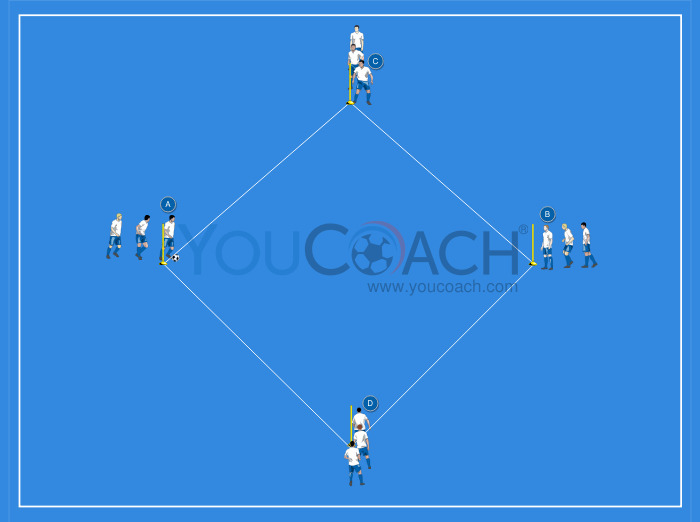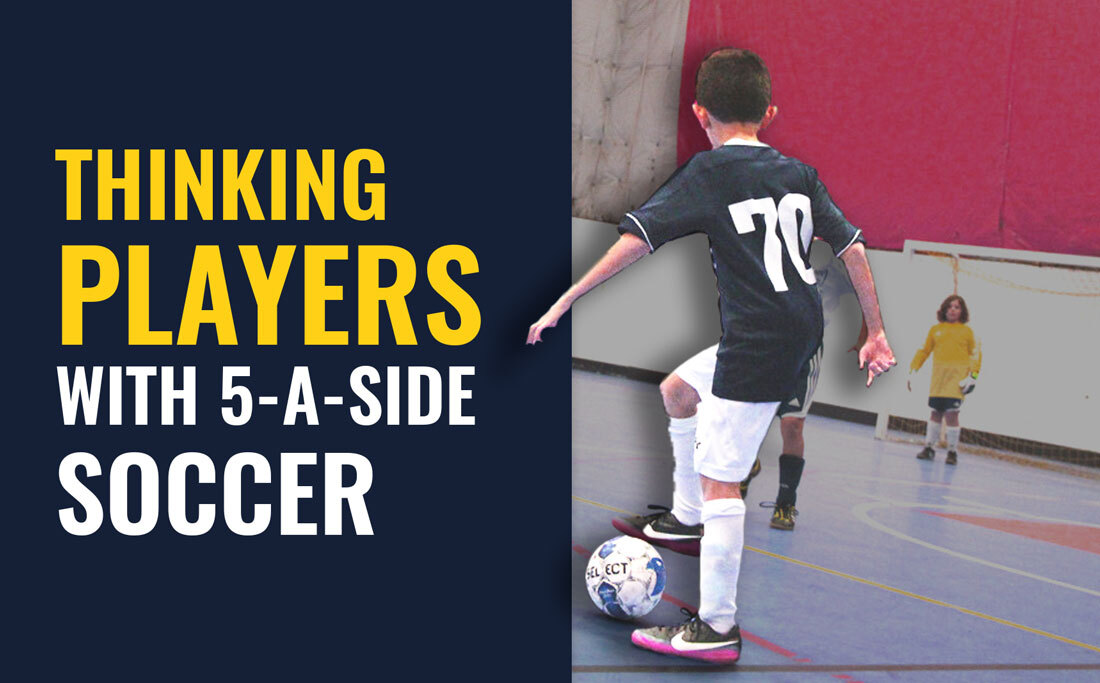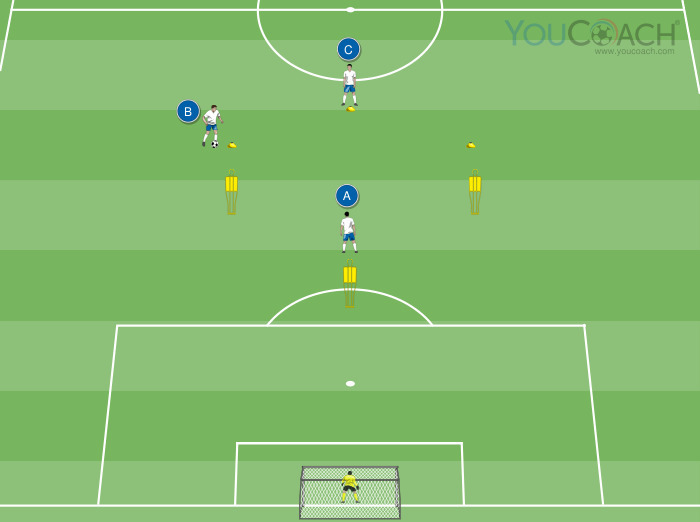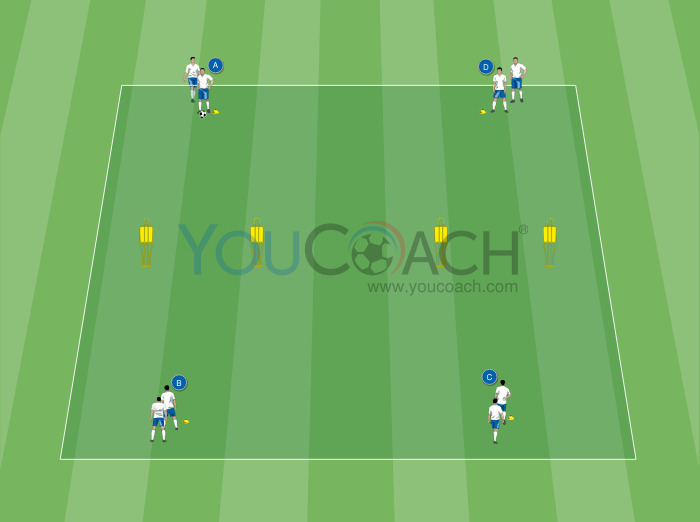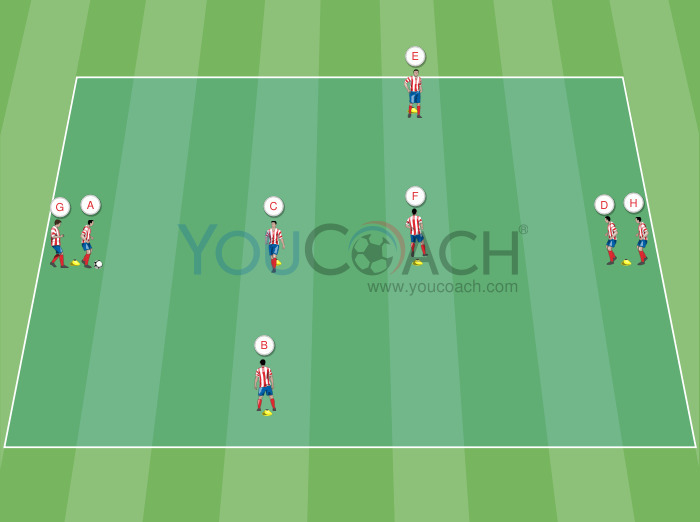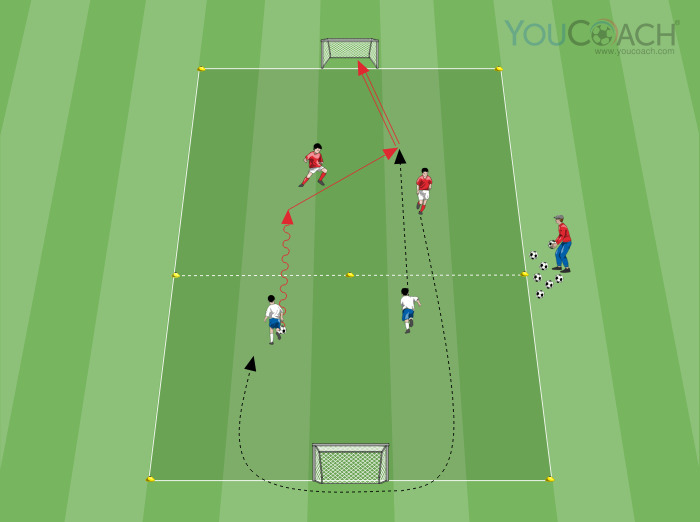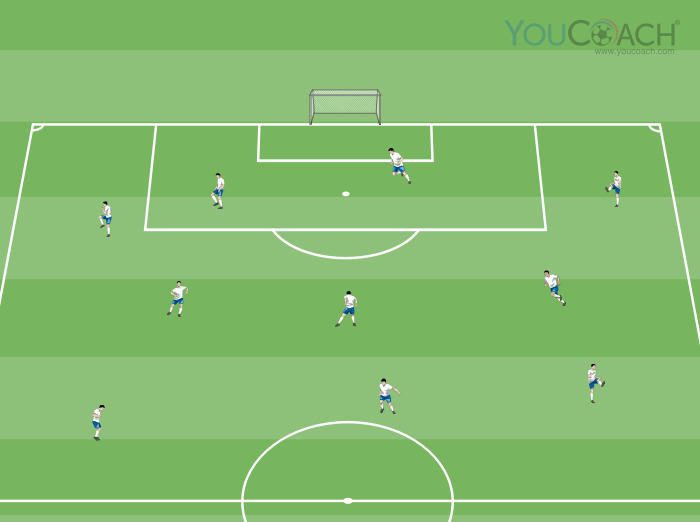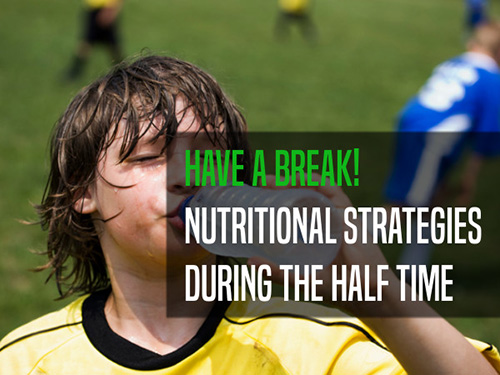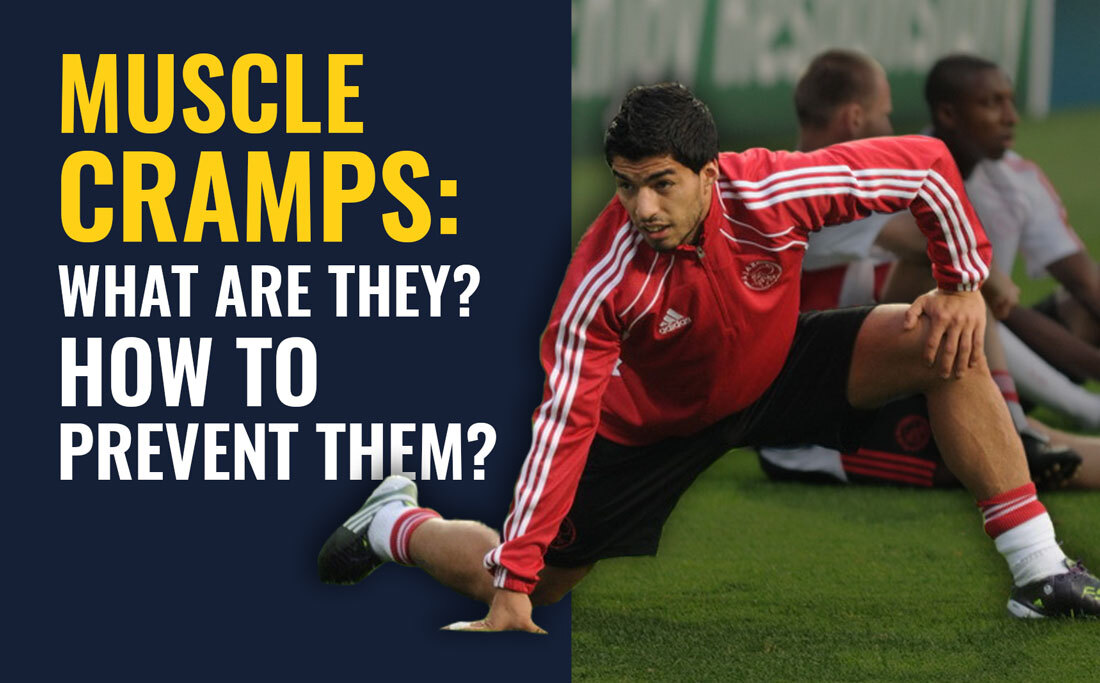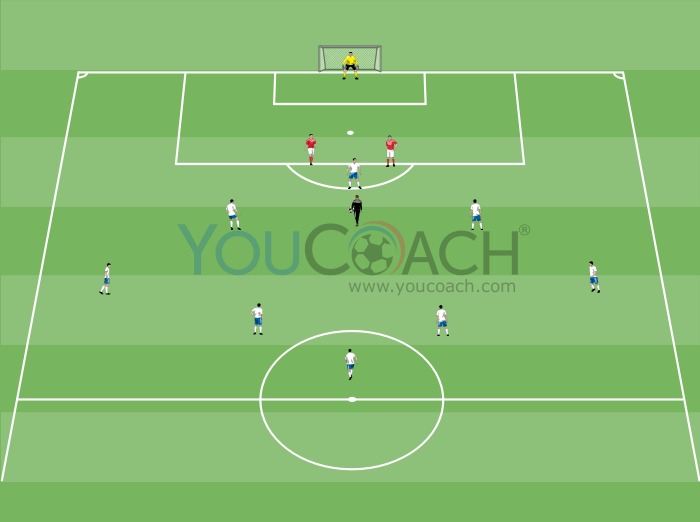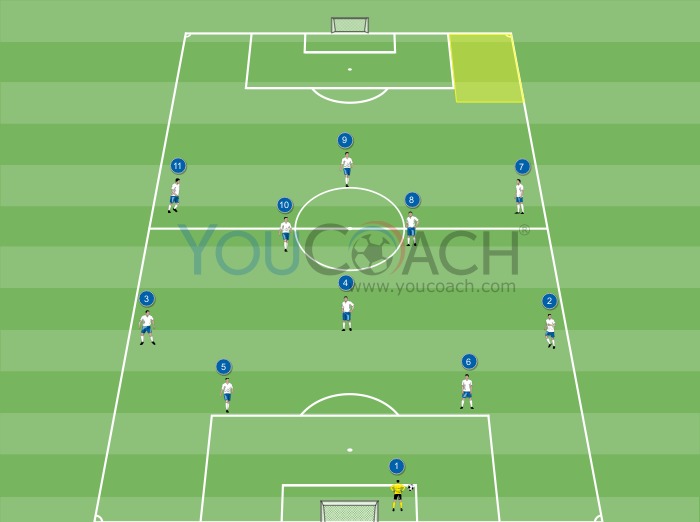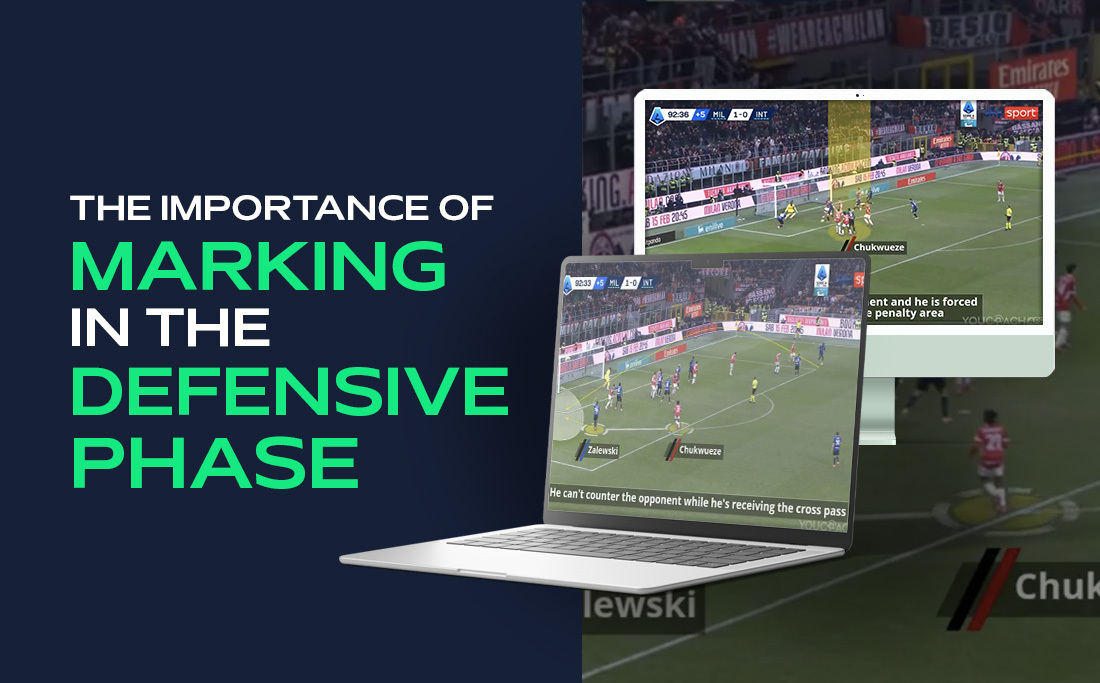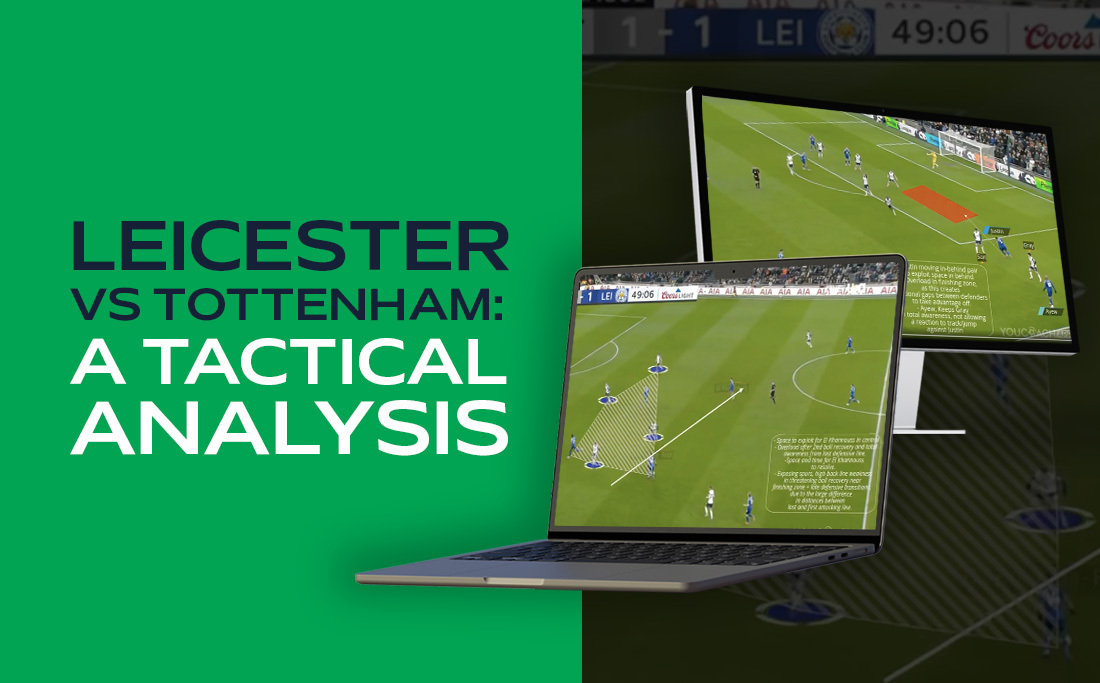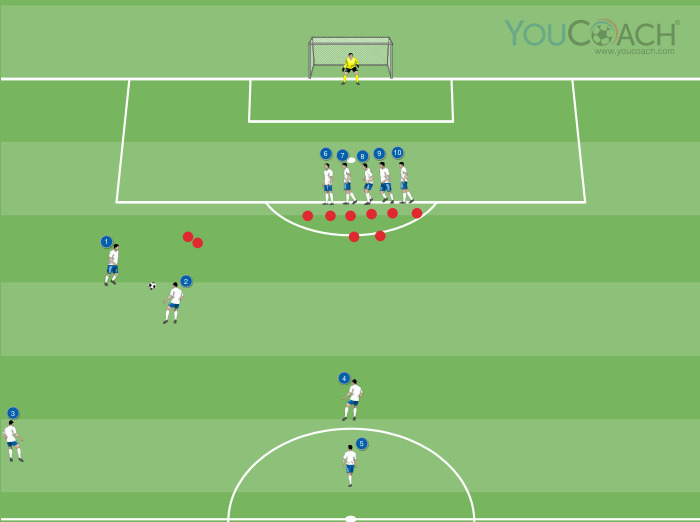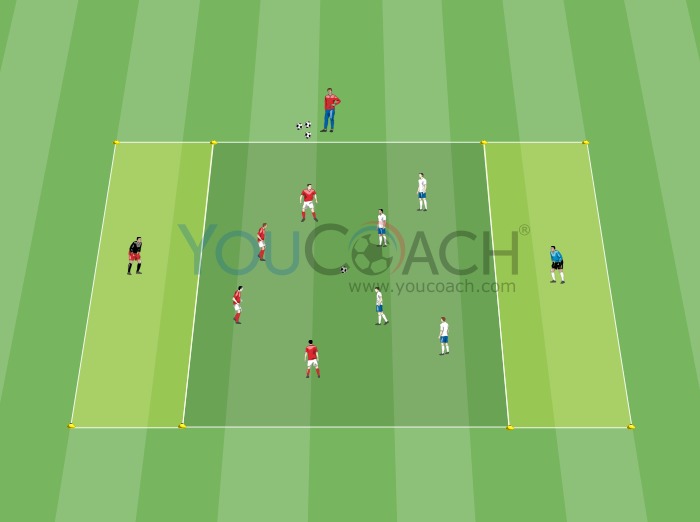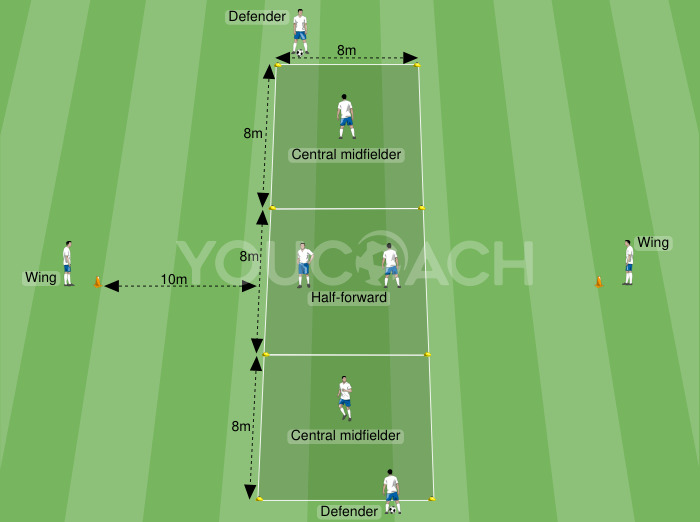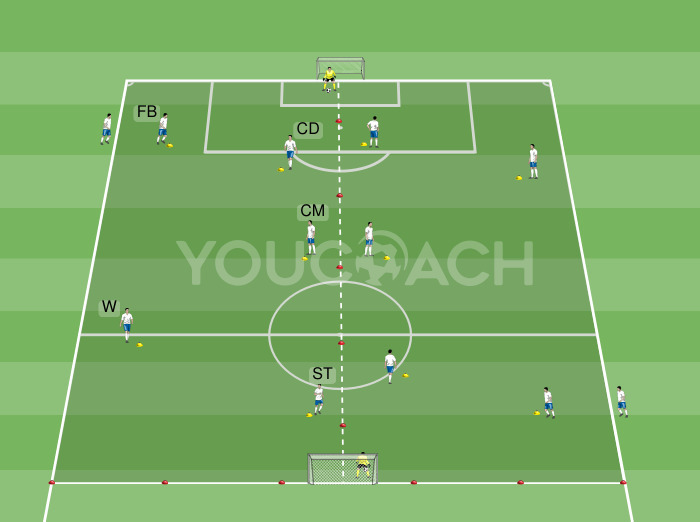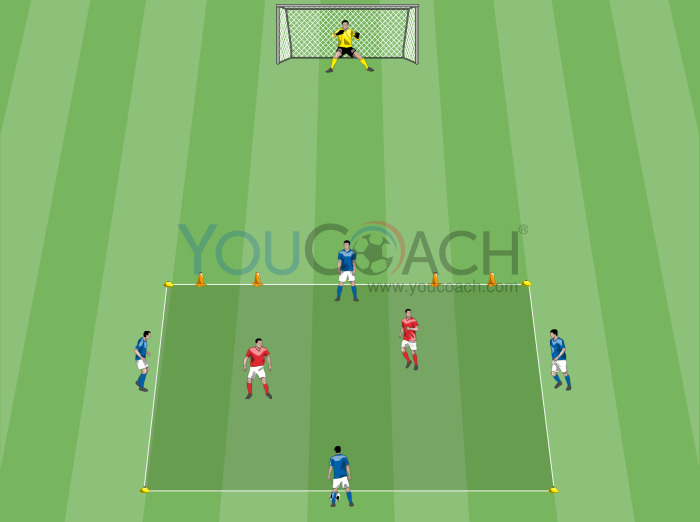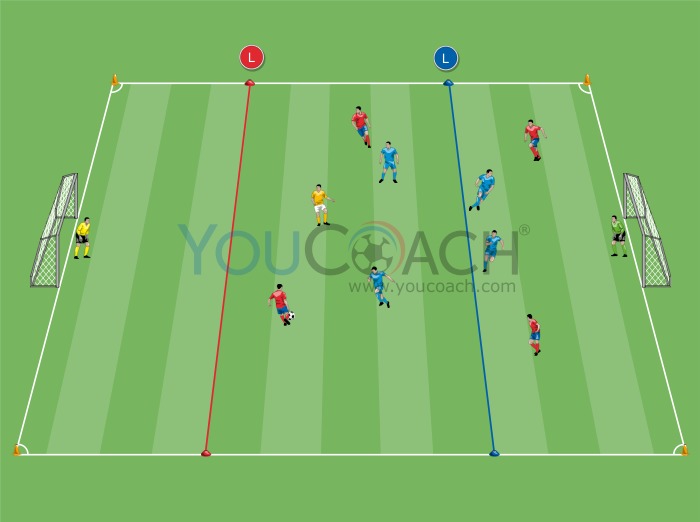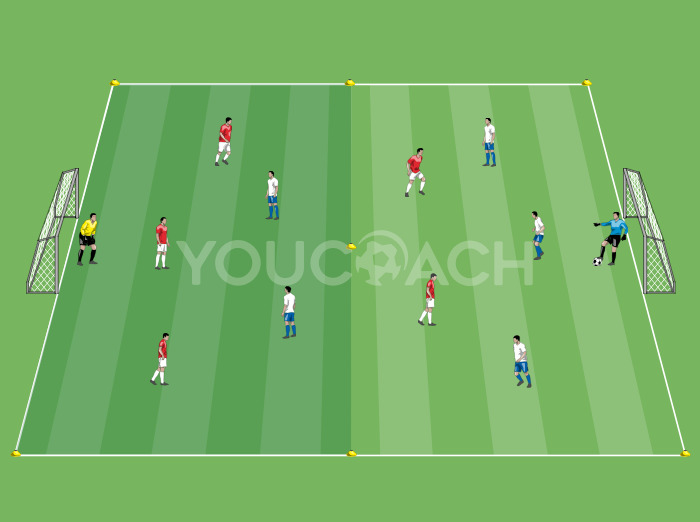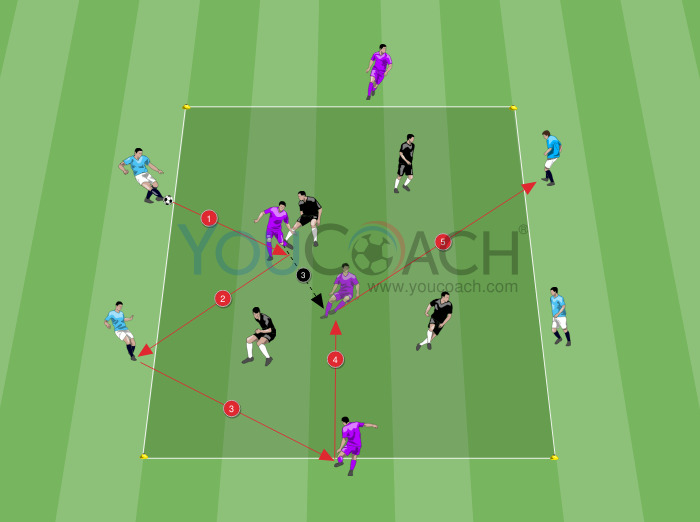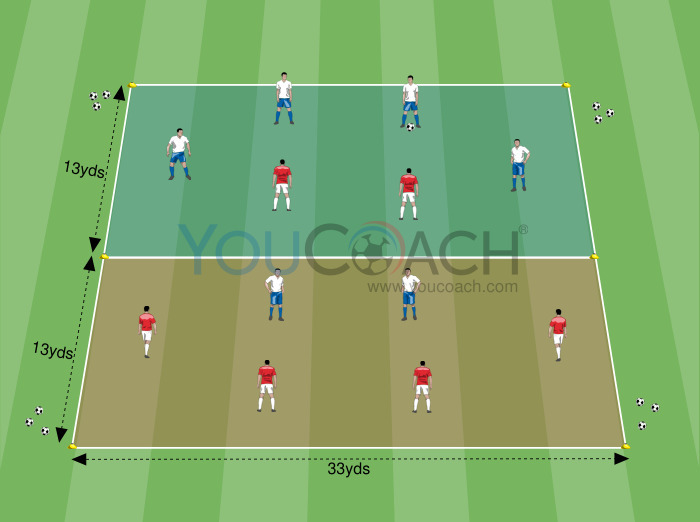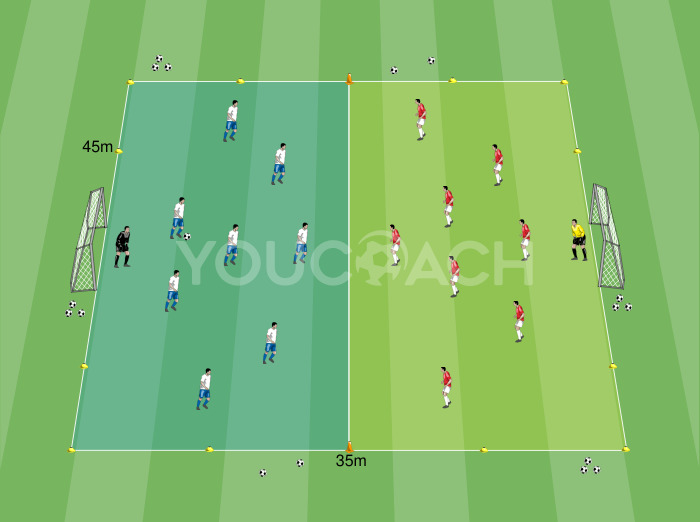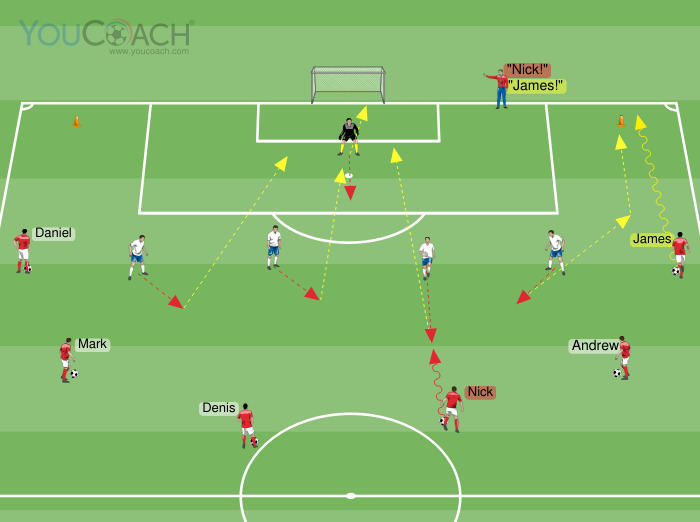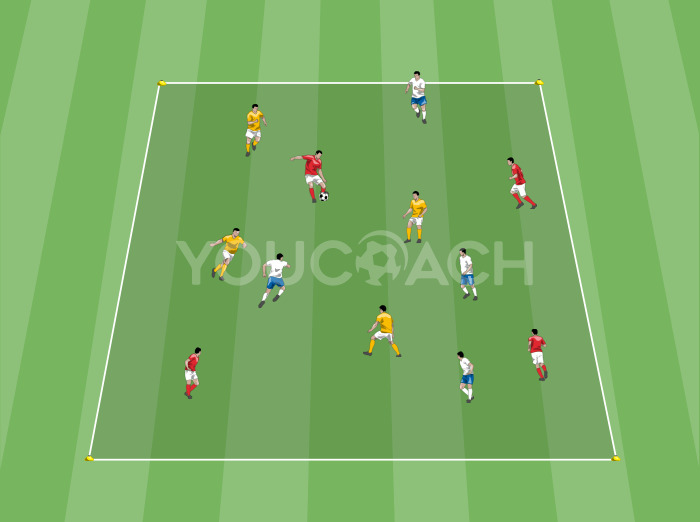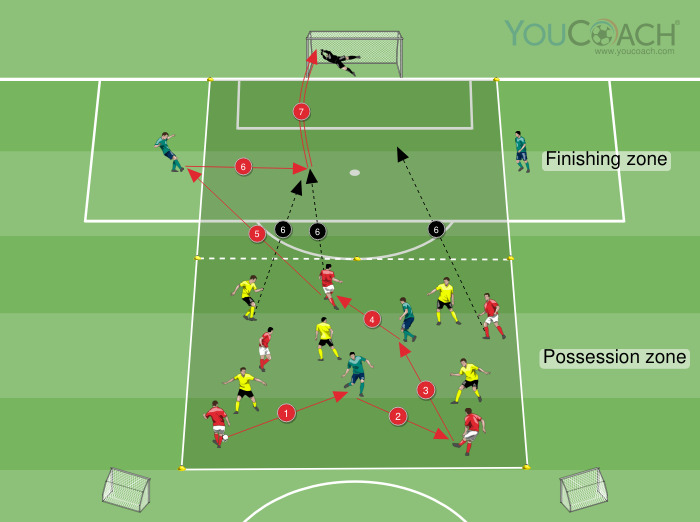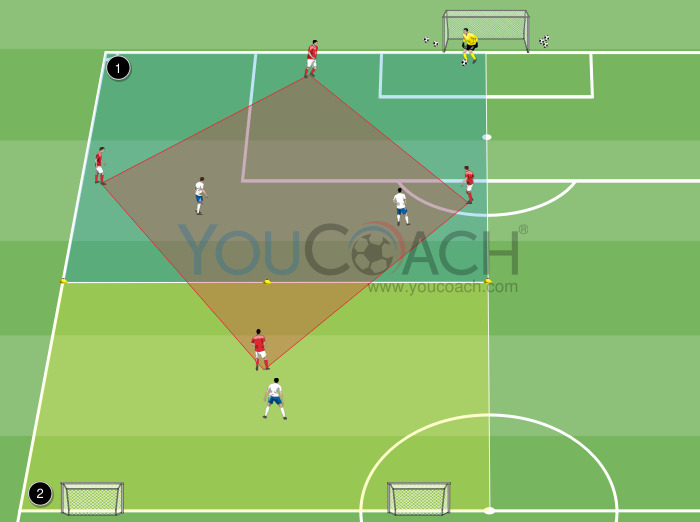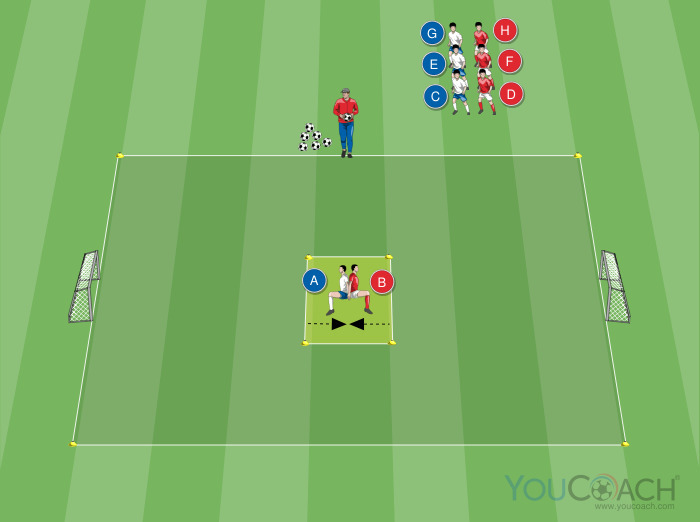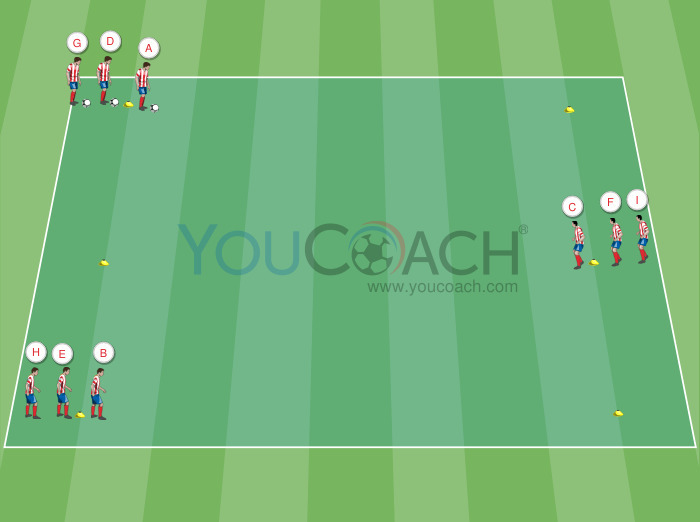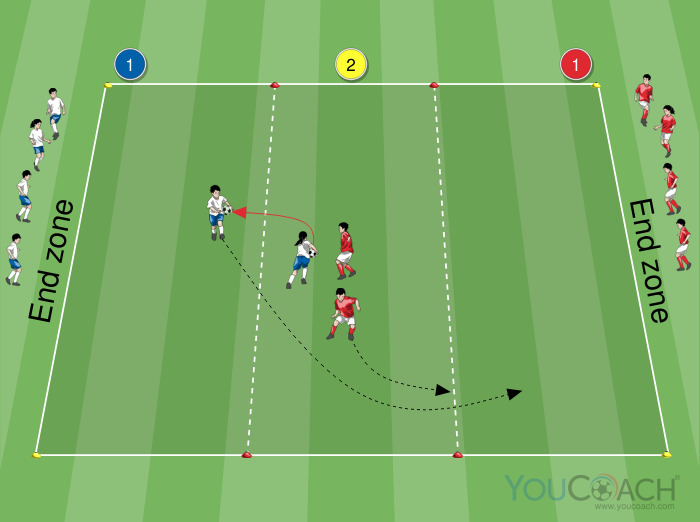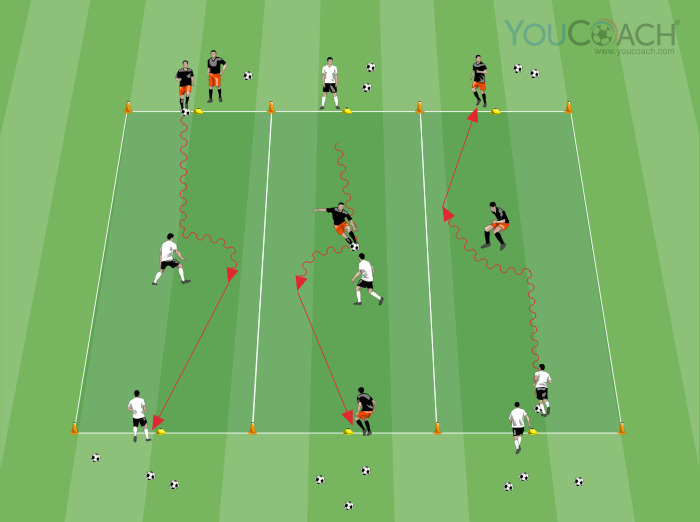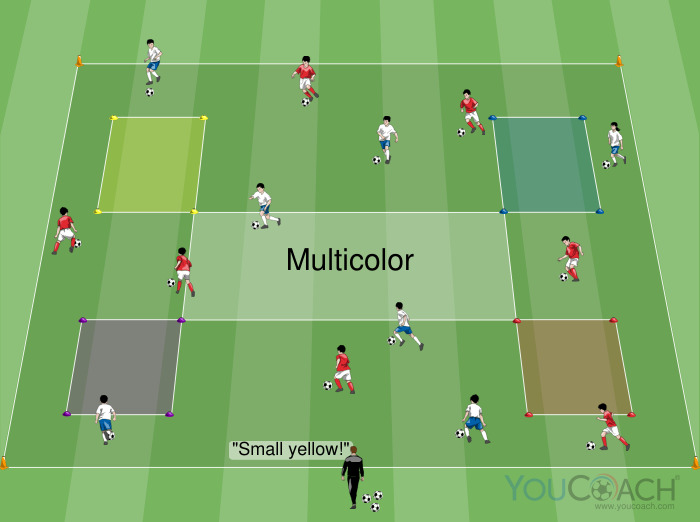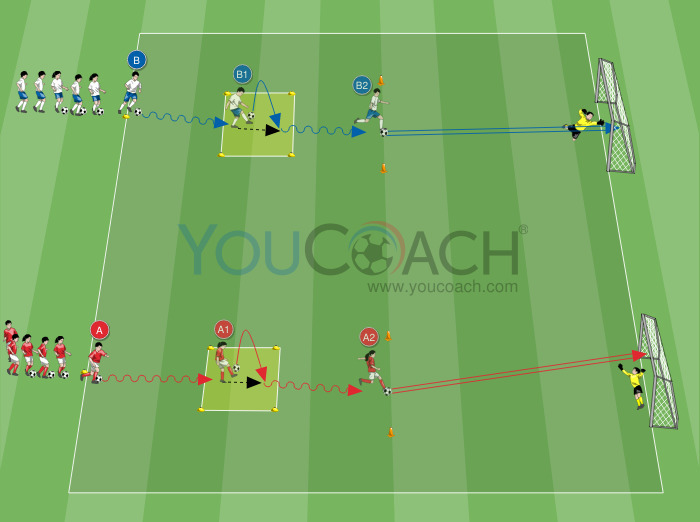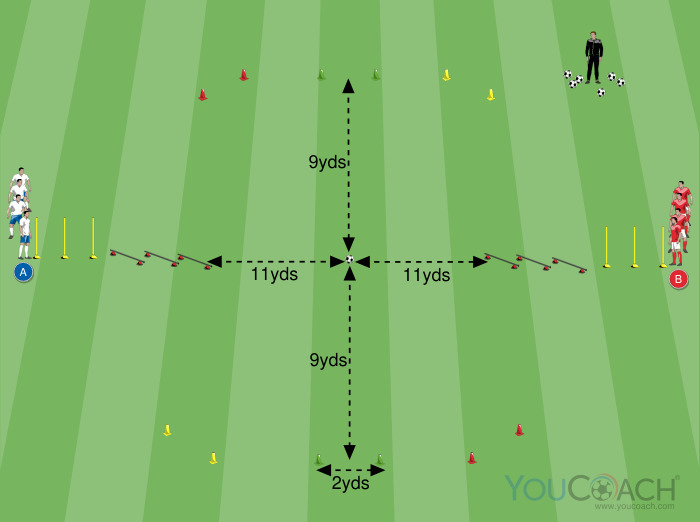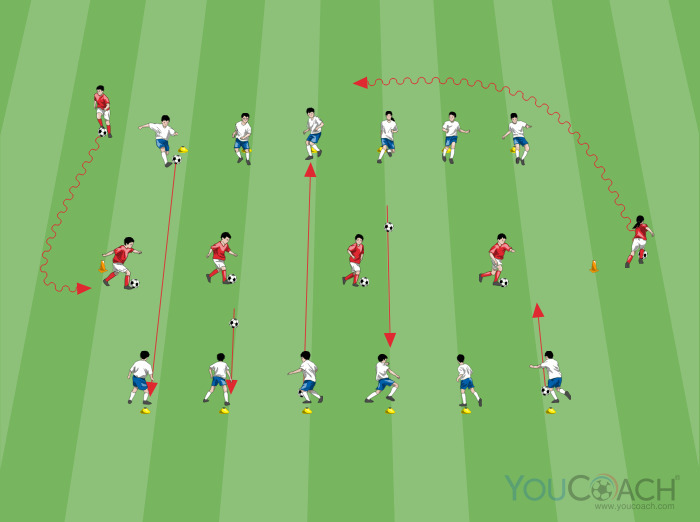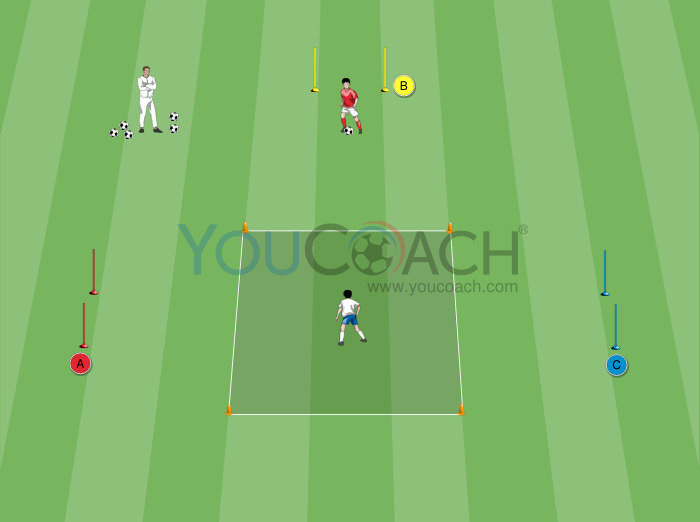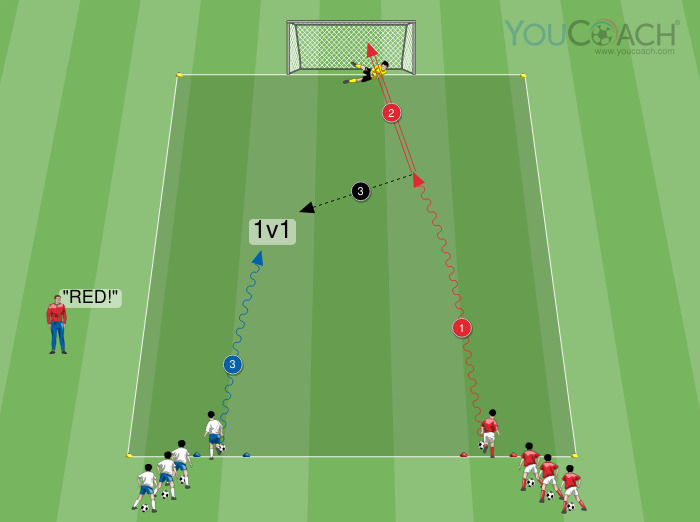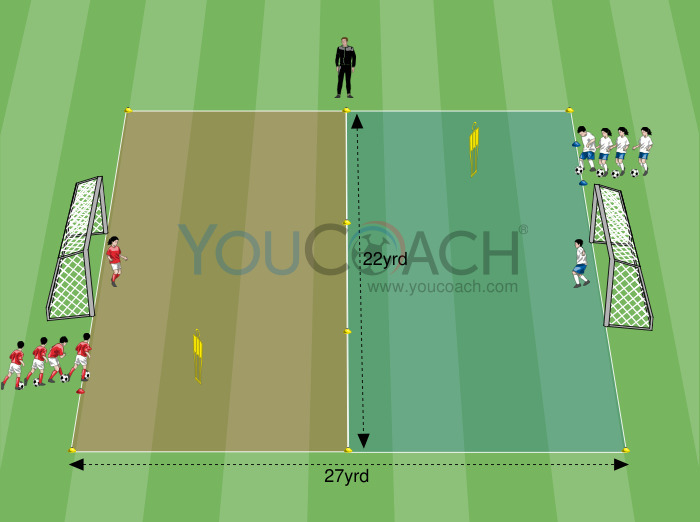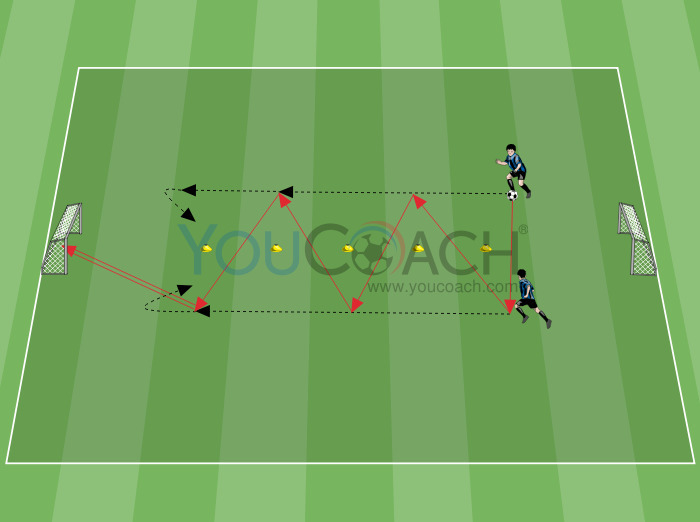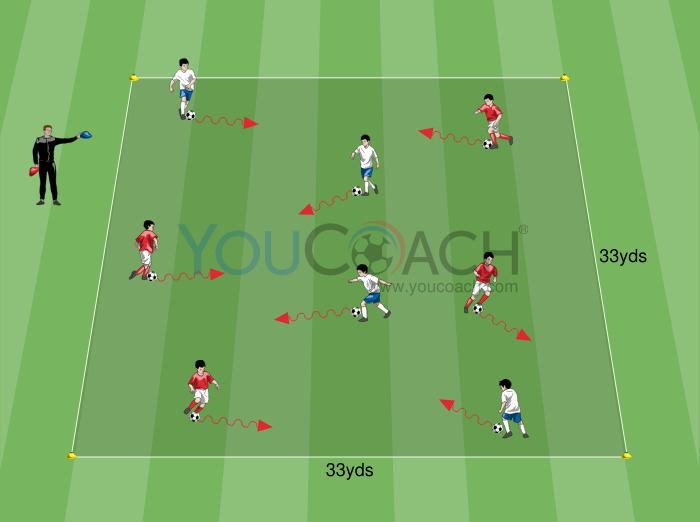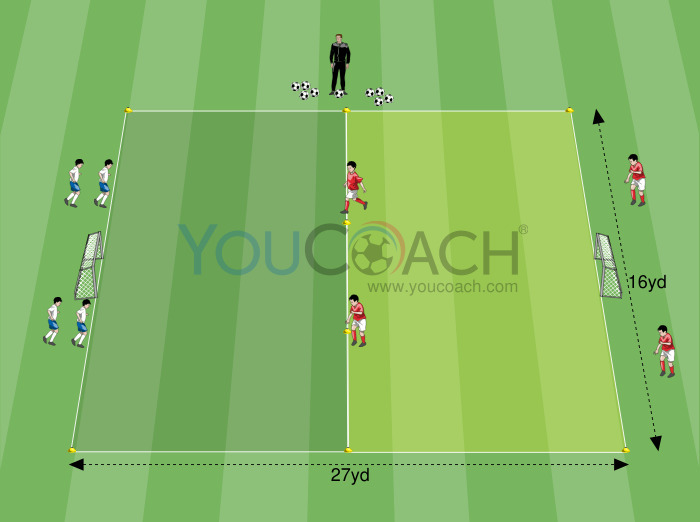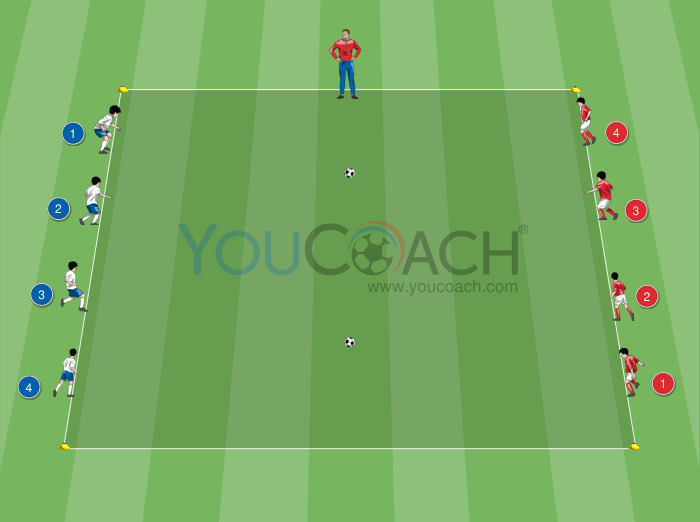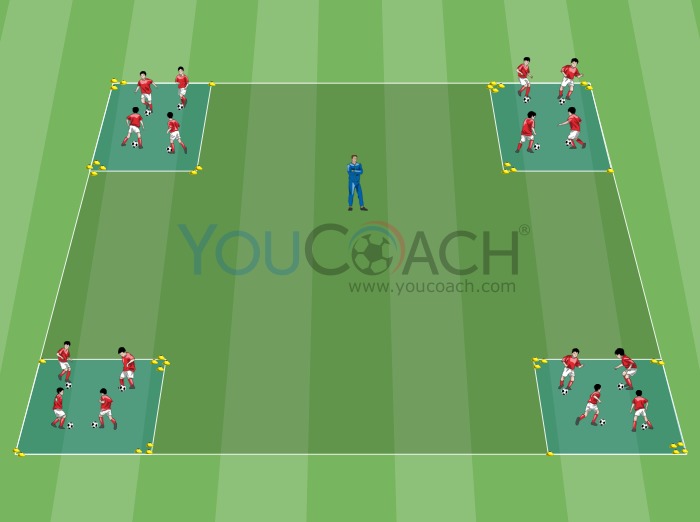Passing sequences with players unmarking in space
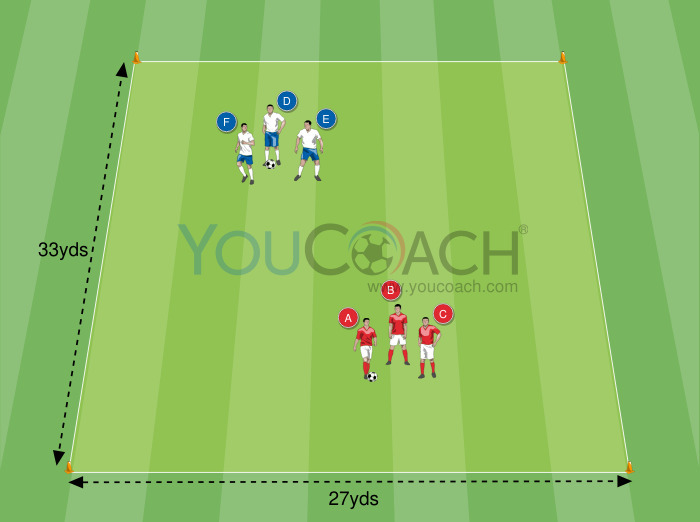
- 4 cones
- 3 vests
- Balls
- Playing Area: 30x25 meters / 33x27 yards
- Players: 6
- Duration: 8 minutes
- Series: 4 of 1'30'' each with 30 seconds of recovery between series
| Summary | Secondary Objectives |
|---|---|
|
Practice passing and receiving by taking care of time and unmarking movements |
Passing, Receiving, Receiving to turn, Awareness, Balance, Decision - determination, Anticipation, Space-time differentiation, Visual perception, Vestibular information, Peripheral vision, Cognitive, First touch, Oriented control, Losing your marker, Pass, Come and go with two players |
Create a 30x25-meter/33x27-yard playing area using four cones. Inside the rectangle place six players: three red players and three white players (as in the picture). Each trio of players performs the drill with their own ball independently of the other but within the same playing area. The players pass the ball to each other following a sequence of passes predetermined by the coach, i.e., alternating between a short pass and a long deep pass on a teammate's unmarking movement. They always change the player initiating the sequence of passes.
- Red player A passes the ball to the nearest teammate (red player B) who has approached to receive the ball
- After controlling the ball, player B passes it with wall play back to teammate A who has approached in support of the latter (triangle)
- In the meantime, red teammate C (third player in the sequence) has moved away to a free space in the playing area, preparing the movement to receive the long pass deep from teammate A
- Player C, who received the ball deep on unmarking movement in space, becomes the first player to start the passing sequence again
At the same time the same sequence of short-long ball transmissions is performed by the trio of white players (players D - E - F in the picture), in the same playing space

- Pass the ball with two or at most three touches
- Players work with teammates of the same color, in trios
- The ball trajectories of the two passing sequences cannot cross each other
- Increase the number of players expanding the the playing area if necessary
- Interweave colors within the sequence of passes (e.g.: red-white-red), thus increasing the cognitive load of the drill
- The drill can be performed as a technical-cognitive activation. Take care of the synchronized movement between the players in the sequence
- Take care of the timing of unmarking in space
- Take care of the unmarking space
- Take care of receiving technique by orienting the body correctly
- It is important for players to interact with each other to have a balanced distribution within the field of play


